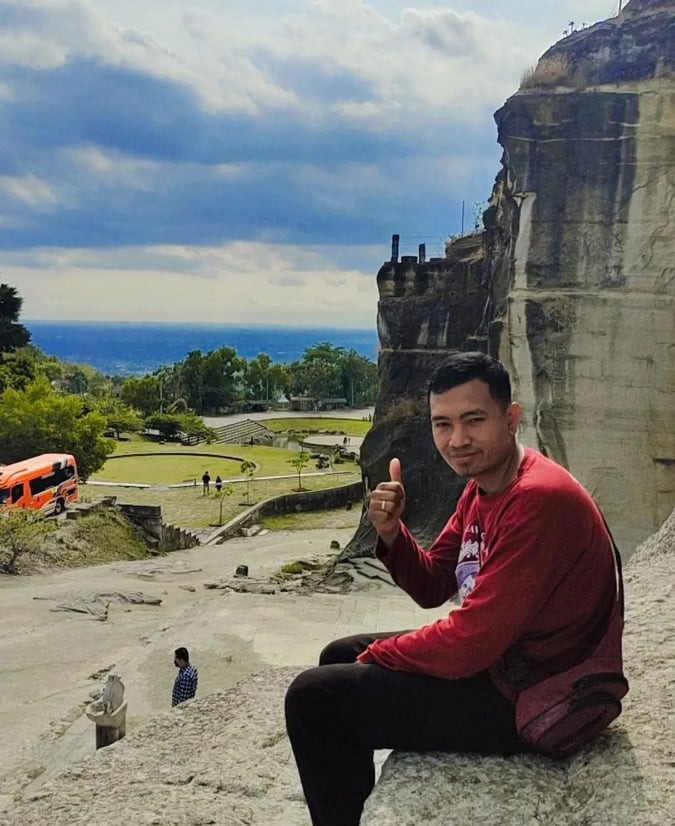Popular Reads
Top Results
Can't find what you're looking for?
View all search resultsPopular Reads
Top Results
Can't find what you're looking for?
View all search resultsNumismatics: More than just collecting old coins and paper bills
For many Indonesians, collecting vintage coins and bills has become a major part of their lives.
Change text size
Gift Premium Articles
to Anyone
For many Indonesians, collecting vintage coins and bills is a major part of their life.
Some things are admired for their beauty. Some others, because of the history they carry. Old coins and bills, however, are esteemed and collected for both. Dani Laksono, for example, said he had been collecting old coins and bills since he was little and making money from his hobby.
"I have been collecting old coins since I was a kid. I began selling vintage money in 2010 when I was a university student. Selling vintage money is no longer my primary source of income, but it was what I did for a living in the past," said Dani.
Asked whether there were people who really made selling vintage money their main source of income, Dani said yes.
"What's funny to me is that you can make money out of any hobby, especially when it comes to collectibles. This statement is truer abroad, however, as in Indonesia, there are still those who struggle to make ends meet, so the collecting sector is not as developed."
While he now collects vintage money for its historical value, he first collected it because, for him, it was unique.
"When I first encountered [vintage coins and bills], I thought they were appealing and unique because they were different from the coins and paper money I had," he said. "There were coins that were notably small, as small as the tip of my pinky finger, there were also very large ones, and there were some that were really thick. To me, they were all really unique."
"There were also ones that had both Arab and Old Javanese scripts printed on them. I also thought they were cool. Then there were foreign coins that were not round but in the shape of a hexagon.
He said it was only later in life that he began to appreciate other aspects of them.
"Later, as an adult, I took an interest in the history they carry. There are also still many underappreciated aspects of these vintage coins and bills."
According to Dani, a banknote can tell us about the political situation when it was being issued, not to mention its cultural and sociological background. "All of which is underappreciated here [in Indonesia], unlike abroad," said Dani.
Share it online: Dani Laksono is a vintage money collector who shares his research on old notes and coins on his YouTube channel. (Courtesy of Dani Laksono). (Personal Collection/Courtesy of Dani Laksono)Heri Awan, a 47-year-old vintage money dealer from Malang, East Java, also sells vintage banknotes because of their visuals, saying that "the designs of vintage money are beautiful, unlike the money currently circulating".
He, however, only keeps two notes that he thinks to be the most beautiful, both of which are counterfeit Rp 400 notes supposedly issued in 1548. These are real counterfeit money, not “fake” real money. The difference lies in the fact that it was an actual circulated counterfeit, meaning it was really used for purchasing, but illegally.
That being said, the desire to collect vintage money is still there. Heri said he really wanted to get his hands on the Rp 10,000 notes issued in 1975. "The note has the best design," he said.
Heri gets his vintage notes mostly from Mojokerto, East Java. He profits tens of thousands to hundreds of thousands of rupiah per transaction. He has sold vintage notes around 10 to 15 times a month for the past five to six years. Heri uses a vintage money catalog to determine how much he should sell each note for.
Similarly, Nur Sahid, who prefers to be addressed as Lowangga, said he collected vintage coins and notes for their beauty and the history behind them.
"My interest in old notes began in 2008 when a friend who worked abroad gave me an old Rp 100 pinisi note [displaying a famous ship] and a QR 1 note. That was when I started taking an interest in old and foreign notes," said Lowangga.
"I bought my most expensive vintage note for Rp 5 million [US$347]. I don't, however, know how much I've spent or the size of my collection [in total].”
Among his favorite notes, he said, was the Orida, mainly because of its history. Orida is short for Oeang Republik Indonesia Daerah (Indonesian Republic Regional Currency), which was circulated in 1946 by the regional governments of Indonesia in a bid to resist the Dutch, whose presence was still influential in the newly born republic.
"I like them because they were printed in such a situation, and you will not find many of them," Lowangga added.
Valuable: Lowangga loves old notes and coins for their beauty and historical value. (Courtesy of Nur Sahid) (Personal Collection/Courtesy of Nur Sahid)Loving not owning
Despite having collected a considerable number of notes and coins, Dani is unsure whether his collection is extensive. When asked how big his collection was, he answered:
"I don't know. Collecting vintage notes and coins is not like collecting motorcycles where you can visibly showcase how large your collection is. For example, even if I had 10,000 notes, people wouldn't say it was huge as it wouldn't be physically bigger than a cupboard."
He said that thanks to the internet, he no longer had to own the notes and coins he wanted physically.
"Thanks to the internet, I no longer have to own them physically. It's enough for me now to just learn about them to enjoy them. On my YouTube channel [Indo Collection], I don't just discuss vintage money as collectibles, but I also discuss it from different aspects."
That is not to say Dani does not feel something is missing by not physically owning the money.
"Of course, I do feel something is missing, but whether I buy a note now depends on my financial situation. I will not just purchase something when I can't afford it," said Dani.
"It can be very costly, you know? In 2019, for example, six Indonesian antique notes were sold for Rp 996 million at Java Auction, the biggest annual auction of its kind. That's just how expensive it can be."
A window to understanding historical periods
Dani currently focuses more on researching old currencies than collecting them. He argued that people could learn so much just from studying old notes and coins. He gave some examples of this:
"Indonesian currency during the Japanese occupation, which lasted for three and a half years, is some of the cheapest vintage money. This intrigued me so much and prompted me to investigate the cause," said Dani.
According to his logic, as the occupation lasted less than five years, Indo-Japanese money should be some of the rarest and, therefore, the most expensive. However, that is not the case.
"The rarity of currencies, it turns out, does not depend on the duration of circulation. Rather it depends on how many copies they got printed," said Dani.
"The problem with Indo-Japanese notes is, sadly, the Japanese government did not assign a serial number to them. Therefore, the total number of notes cannot be determined, resulting in collectors failing to recognize them as something valuable. The note is not rare if we don't know the actual quantity of the money [circulated]. Thus, no value can be assigned to it."
ohmg













